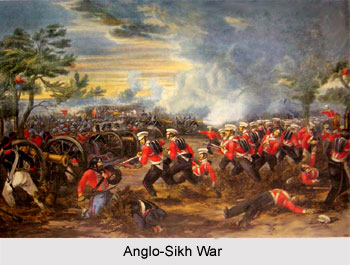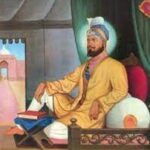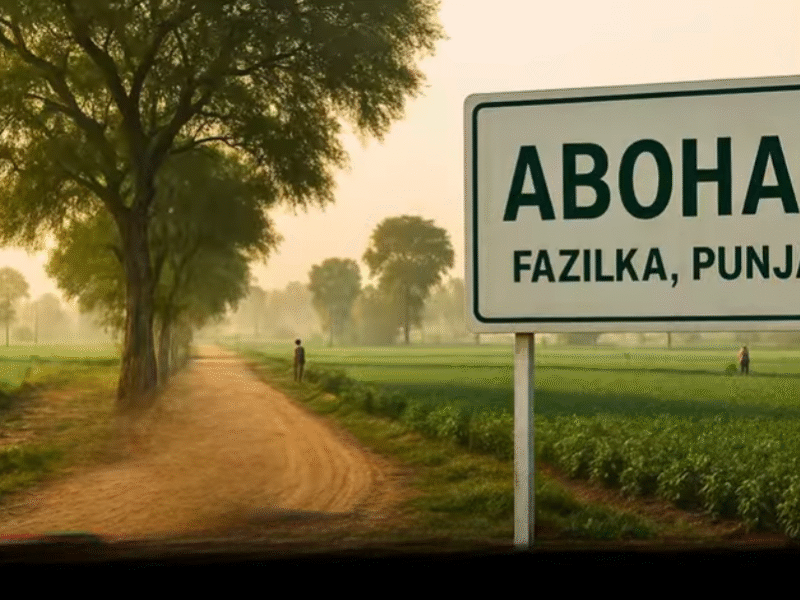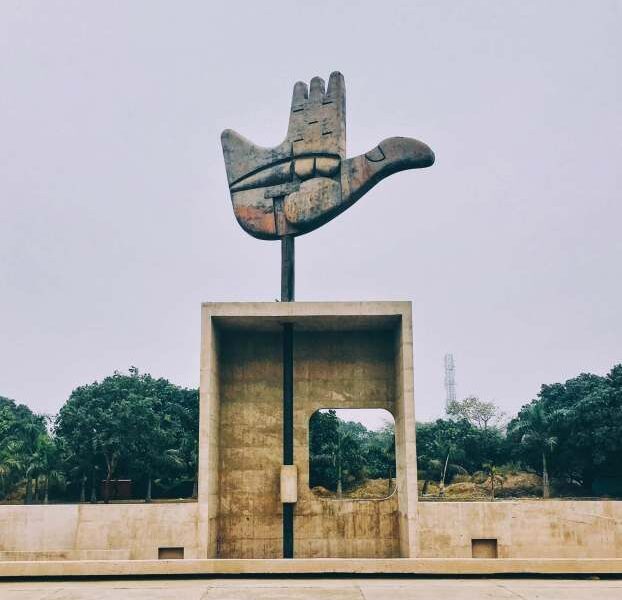The First Anglo-Sikh War was fought in and around the Ferozepur area of Punjab in 1845 and 1846 between the Sikh Empire and the British East India Company. It culminated in the Sikh empire’s loss and partial submission, as well as the cession of Jammu and Kashmir as a separate princely state under British suzerainty.
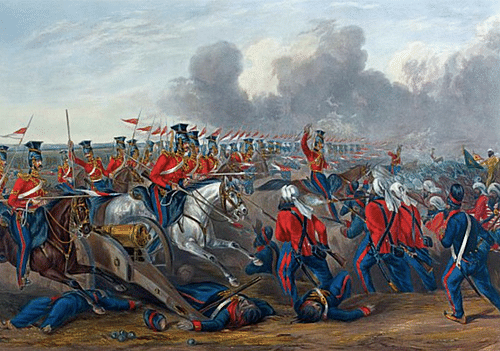
The history and reasons for the war
In History Of The First Anglo-Sikh War Maharajah, Ranjit Singh developed and cemented the Sikh kingdom of Punjab in the early nineteenth century, about the same time that British-controlled lands advanced to Punjab’s frontiers through conquest or annexation. When in the History Of The First Anglo-Sikh War Ranjit Singh maintained a wary alliance with the British, relinquishing some land south of the Sutlej River while building up his military strength to resist British expansion and wage war against the Afghans. He hired American and European mercenary soldiers to train his army, and he also included Hindu and Muslim contingents.
Punjabi Happenings in the History Of The First Anglo-Sikh War
Maharaja Ranjit Singh, the Sikh trophy gun, died in 1839. His realm began to fall into disarray after his demise. Kharak Singh, Ranjit’s unpopular legitimate son, was deposed from power within a few months and died in prison under unknown circumstances. It was commonly assumed that he had been poisoned. In the History Of The First Anglo-Sikh War, he was succeeded by his capable but estranged son Kanwar Nau Nihal Singh, who died in dubious circumstances a few months later after being hurt by a falling archway at the Lahore Fort while returning from his father’s cremation. The Sikh Sindhanwalias and the Hindu Dogras were competing for dominance and influence in Punjab at the time. In January 1841, Sher Singh has crowned Maharaja of the Sikh Empire, with Dhian Singh Dogra as his prime minister.
Following Ranjit Singh’s death in History Of The First Anglo-Sikh War, the army grew significantly, from 29,000 (with 192 cannons) in 1839 to over 80,000 in 1845 as landlords and their retainers took up arms. It declared itself to be the Sikh nation’s incarnation. Its regimental panchayats in History Of The First Anglo-Sikh War (committees) formed an alternative power source within the kingdom, declaring that Guru Gobind Singh’s ideal of the Sikh commonwealth had been revived, with the Sikhs as a whole assuming all executive, military, and civil authority in the state, which British observers decried as a “dangerous military democracy”. The regiments were described by British representatives and visitors in Punjab as maintaining “puritanical” order internally, but also as being in a continual state of mutiny or insurrection against the central Durbar (court).
In the History Of The First Anglo-Sikh War despite lavishing cash on a decadent court, Maharajah Sher Singh was unable to meet the army’s wage requests. In September 1843, he was assassinated by his cousin, an army officer named Ajit Singh Sindhanwalia. The Dogras exacted their vengeance on the perpetrators, and Jind Kaur, Ranjit Singh’s youngest widow, was appointed regent for her infant son Duleep Singh. After vizier Hira Singh was slain by forces headed by Sham Singh Attariwala while attempting to depart the capital with loot from the royal treasury (toshkana), Jind Kaur’s brother Jawahar Singh took over as vizier in December 1844. In 1845, he orchestrated the death of Peshaura Singh, a danger to Duleep Singh. The army summoned him to account for this. Despite attempts to bribe the troops, he was killed in the presence of Jind Kaur and Duleep Singh in September 1845.
The outbreak of war
During the History Of The First Anglo-Sikh War in 1846, Raja Lal Singh led Sikh soldiers against the British.
Diplomatic connections were severed after mutual demands and allegations between the Sikh Durbar and the East India Company. An army from the East India Company marched towards Ferozepur, where a division was already stationed. In the History Of The First Anglo-Sikh War, this force was led by Sir Hugh Gough, the Bengal Army’s Commander in Chief, and was joined by Sir Henry Hardinge, the British Governor General of Bengal, who ranked behind Gough in the military line of command.
The British East India Company forces in the History Of The First Anglo-Sikh War were made up of Bengal Army formations, with one British unit for every three or four Bengal infantry or cavalry units. The majority of the British artillery was made up of light cannons from the elite Bengal Horse Artillery.
In the History Of The First Anglo-Sikh War General Raja Lal Singh led the Sikh Army at the time, and he, along with Tej Singh, betrayed the Sikhs during the conflict.
The two generals were constantly exchanging information and even receiving orders from British officers.
In reaction to the British move during the History Of The First Anglo-Sikh War, on December 11, 1845, the Sikh army began crossing the Sutlej. Although the army’s leaders and primary units were Sikhs, there were also Punjabi, Pakhtun, and Kashmiri infantry regiments. The artillery was mostly made up of heavy gun groups organized and trained by European mercenaries.
The Sikhs claimed the History Of The First Anglo-Sikh War they were just going onto Sikh lands (particularly, the disputed settlement of Moran) on the east side of the river, but the British saw the move as blatantly hostile and declared war.
